Hearing loss is the physical outcome that takes place when the ear, auditory nerves or hearing centers of the brain don’t function properly. Most people associate hearing loss with the natural aging process. While it’s true that some hearing loss comes with age, there are actually many causes of hearing loss that can affect people at any age.
Audiometric hearing is the ability to hear sounds, and problems with hearing range from mild to profound loss. At one end of the spectrum, you may only need to occasionally need to ask people to repeat themselves. On the other end, you may hear only a ringing sound, or even nothing at all. Hearing problems can occur before birth, or at any point from childhood to old age. It can happen suddenly, or develop gradually over time, often so slowly that you may not notice it for a long time. Hearing loss can also happen differently in each ear, which increases the complex interactions that can lead to auditometric hearing loss.
These are the four major categories of hearing loss:
1. Auditory Processing Disorders
2. Conductive
3. Sensorineural
4. Mixed.
Each individual that experiences hearing loss will have their own unique set of causes so it can be helpful to learn about all the possibilities to best protect and repair your hearing.
Hear the buzz about hearing loss! Know the types, signs and treatment so you never miss a word. #HealthStatus
Key Points
- 1There are four types of hearing loss and many of them are preventable.
- 2If you or someone you love is showing symptoms of hearing loss, contact a doctor for an assessment.
- 3There are many treatments available: hearing aids, surgery, or cochlear implants may help you regain your hearing.
Types of hearing loss
1. Auditory Processing Disorders
Many people don’t realize a significant portion of the hearing process takes place in the brain, where sound is processed into meaning. If the brain can’t determine where the sound is coming from or can’t understand speech, this is considered hearing loss. Auditory Processing Disorder is a birth defect that prevents children from processing sound, especially spoken language. Children with this disorder struggle to learn to speak, follow directions, or focus in noisy places, such as playgrounds or classrooms.
This kind of hearing loss is not related to any problems with the ear itself, but is considered a neurological problem. Children with this type of hearing loss are sometimes misdiagnosed with ADD as both conditions share a suite of behaviors problems such as not being able to follow directions. Treatment, however, is very different. Early intervention is the key for helping children with Auditory Processing Disorders, so if you are a parent with concerns about your child’s behavior, ask your pediatrician to test your child’s hearing.
2. Conductive Hearing Loss
The ear itself is made up of three chambers: the outer, middle, and inner ear. In each chamber, delicate membranes, tiny bones, and sensory hair cells conduct sound vibrations. When there is a problem with this conduction, hearing loss occurs. Conductive hearing loss can be as minor as having too much earwax or swelling from a common ear infection or allergies, but more serious ear problems can also occur.
In rare instances, infants are born with congenital defects that directly change the shape or function of the ear, and may require surgical reconstruction to regain hearing. This can be a genetic condition passed through the family generations, or can occur when the mother is sick during pregnancy, so good prenatal care and up to date vaccinations are recommended as a safety precaution. Talk to your doctor if there is a family history of congenital hearing loss so they can test your baby early. When reconstruction of an infant’s ear structures is not an option, depending on which area of the ear is malformed, a conventional hearing aid or bone conduction hearing aid can make it possible for the child to hear a normal range of sounds.
Another rare cause of conductive hearing loss is otosclerosis, where a tiny bone in the ear called the stapes grows in an irregular way and becomes immobile. This can be a genetic condition that results in hearing loss during adolescence or early adulthood, or can happen as a side effect of having measles. Getting yourself and your children vaccinated against measles can reduce the risk of this condition. While surgery is effective in reducing the size of the stapes, hearing will not fully return after experiencing otosclerosis.
Most often, conductive hearing loss occurs when a normal ear becomes damaged from injuries or disease. Sometimes, this loss is temporary and will resolve without medical intervention. For example, a middle ear infection, common in young children and swimmers, usually results in hearing loss due to pressure on the ear drum from swelling. As the ear infection resolves, hearing will return to normal. Most ear infections clear up on their own, but chronic infections may require antibiotics or a minor surgery to implant tubes that allow fluid to drain away from the ear drum.
The ear can also become damaged due to trauma, such as a car accident or putting cotton swabs or other foreign bodies inside the ear canal. Surgery to repair the middle ear is usually required to improve this kind of hearing loss, but regaining full hearing may not be possible. You can protect yourself from this kind of hearing loss by wearing a helmet while riding a bike or motor cycle, and never cleaning the inside of your ears with anything smaller than your elbow. If you have waxy buildup or feel your ears need to be cleaned, see a doctor or ear specialist.
3. Sensorineural Hearing Loss
The inner ear, or Cochlea, is a fluid filled chamber where sound vibrations interact with tiny hair cells and are transmitted to the auditory nerve. This is where the mechanical hearing process interacts with the neurons that lead to the brain. When these hair cells or the auditory nerve is damaged, Sensorineural Hearing Loss occurs. Unfortunately, this kind of hearing loss is usually permanent.
A certain degree of sensorineural hearing loss is a normal part of aging as the cochlear hair cells reduce in number over time. Younger people can damage the hair cells accidentally by exposing them to excessively loud noises, accelerating hearing loss at an earlier age. High intensity sound from power tools, loud music, or other sources can all damage the inner ear and are leading to higher rates of sensorineural hearing loss than ever before. Diseases such as mumps and meningitis, or drugs such as aspirin and some kinds of antibiotics can also cause ear damage that may eventually lead to hearing loss.
All these factors can be cumulative, that is, they pile up over time, so even if you’ve listened to loud music and not noticed hear loss in the past, it may make you more susceptible to damage the next time it happens. Wear hearing protection any time you go to a concert or work in a loud environment, and set your phone or music player to limit volume when using headphones. Make sure children are vaccinated against common diseases linked with hearing loss, and monitor their exposure to loud sounds as well.
People with sensorineural hearing loss may have a range of symptoms, depending on which area is damaged. Because it can happen gradually over time, or may not appear as stereotypical muffled sounds, you may not even realize your hearing has been damaged.
Some of the most common symptoms of sensorineural hearing loss are:
– Certain sounds actually seem TOO loud
– Noisy places make it hard to follow conversations or give you headaches
– Women’s voices are harder to hear than men’s
– Feeling off balance, or dizzy
There is no surgery or drug that can reverse damage to the cells and nerves inside the inner ear. There are treatments that can help those suffering from sensorineural hearing loss, however, including special hearing aids or a cochlear implant. An external receiver similar to a small microphone collects the sound and sends it to the implant. This small electronic device is implanted into the bone around the ear and works as a receiver that by-passes the damaged cochlea and sends sound signals directly to the brain. While cochlear implants so allow people to receive sound signals to the brain, they do not truly restore hearing. They work best for people who are already almost completely deaf in both ears, when normal hearing aids can’t help. Therapy and a long period of learning how to use the implant is required in order to make this treatment effective.
4. Mixed Hearing Loss
All hearing loss is different. Often, both conductive AND sensorineural hearing loss can occur at the same time. The sensorineural causes are non-reversible, and the conductive loss may or may not be temporary. This can make it harder for a doctor to determine the cause or causes of your hearing loss or to decide on a treatment. For example, you may not notice the minor symptoms from some minor permanent sensorineural loss until you also get sick with an ear infection that causes swelling in your ears and leads to temporary conductive loss.
Doctors will usually attempt to treat any conductive hearing loss first, as it is more likely to be temporary or reversible with interventions. Patients with mixed hearing loss are sometimes able to catch sensorineural loss that would have gone untreated, or may become better candidates for hearing aids than patients with sensorineural loss alone.
Recognizing hearing loss
No matter what the underlying cause may be, having undiagnosed hearing loss can interfere with your normal activities and reduce your quality of life. Because all four of the types of hearing loss can happen gradually and can build upon each other, the person experiencing hearing loss often won’t notice the problem until it begins to affect others. A common complaint is that Grandpa turns the tv up too loud, or that Mom doesn’t seem to understand everything when we talk on the phone. Many of these symptoms can be mistaken for behavioral problems and ear health can go overlooked for too long.
Look for these symptoms in yourself and your loved ones to catch hearing loss before it becomes a problem:
– Not hearing the whole conversation. This may become obvious if someone always seems to fore a laugh without understanding the joke, or if they have to ask you to repeat important details over and over.
– Needing to see the face of a speaker while they talk. Many people rely on facial expressions or intuitive lip reading to support their loss of hearing without realizing they are compensating.
– Feeling exhausted after busy social interactions that require lots of listening or jobs that have audible directions.
– Avoiding social situations you used to enjoy or keeping conversations casual to avoid getting caught not understanding.
– Feeling confused or dizzy more often than normal.
– Hearing high-pitched buzzing, or ringing noises in quiet spaces.
Get help
Hearing loss doesn’t have to change your life. With proper care and treatment, many people recover enough hearing to regain normal activities. No matter which type of hearing loss is affecting you, a productive and happy life is still possible. For children in particular, early detection and treatment is key to allow the language processing centers of the brain to develop normally, or to prevent misdiagnosis with behavioral problems when hearing loss may be responsible. Elderly patients, and people who live alone should also seek prompt treatment for suspected hearing loss. As loss progresses, it often leads to withdrawing from social supports and feeling more isolated, which means you may be at increased risk for depression.
If the symptoms in this article seem familiar, or you’re worried about the hearing of someone you love, see a family doctor or professional audiologist who can test your hearing and talk to you about options.
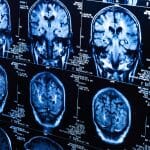

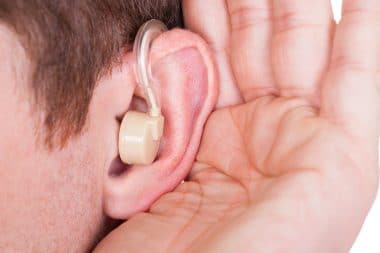
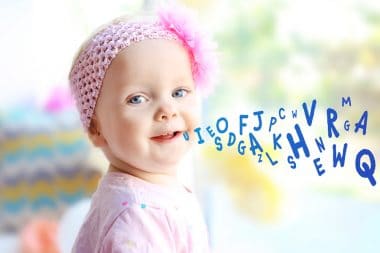
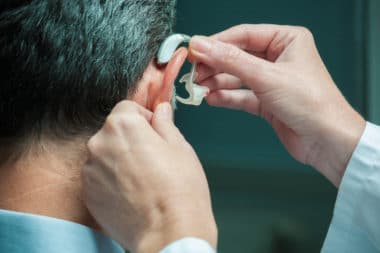
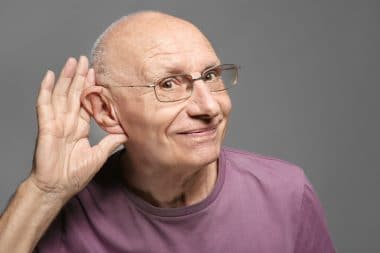
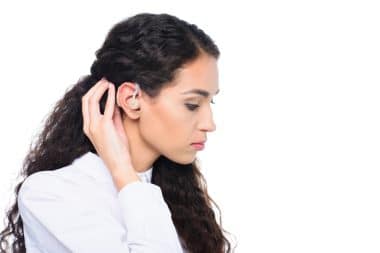

Reply